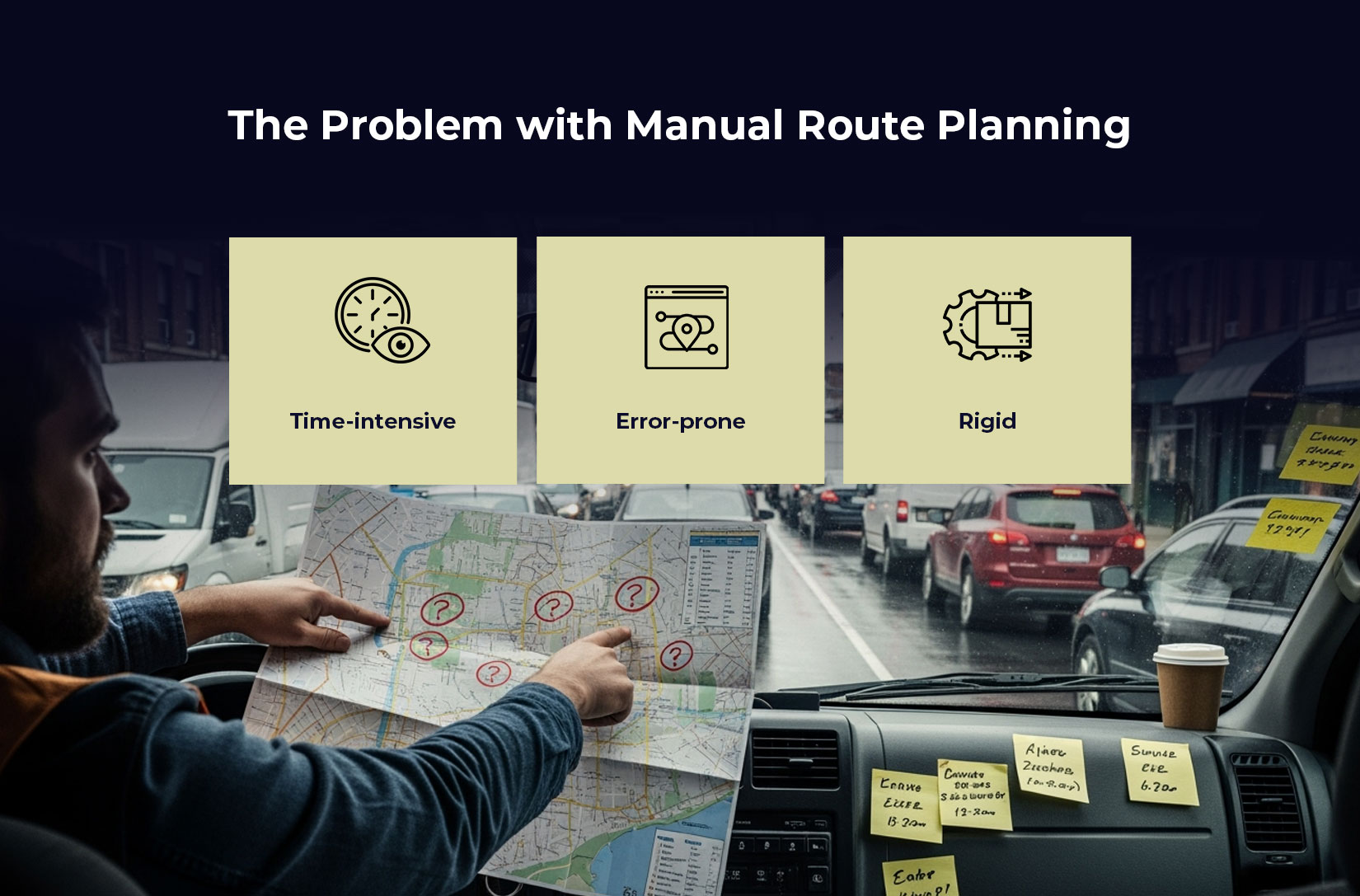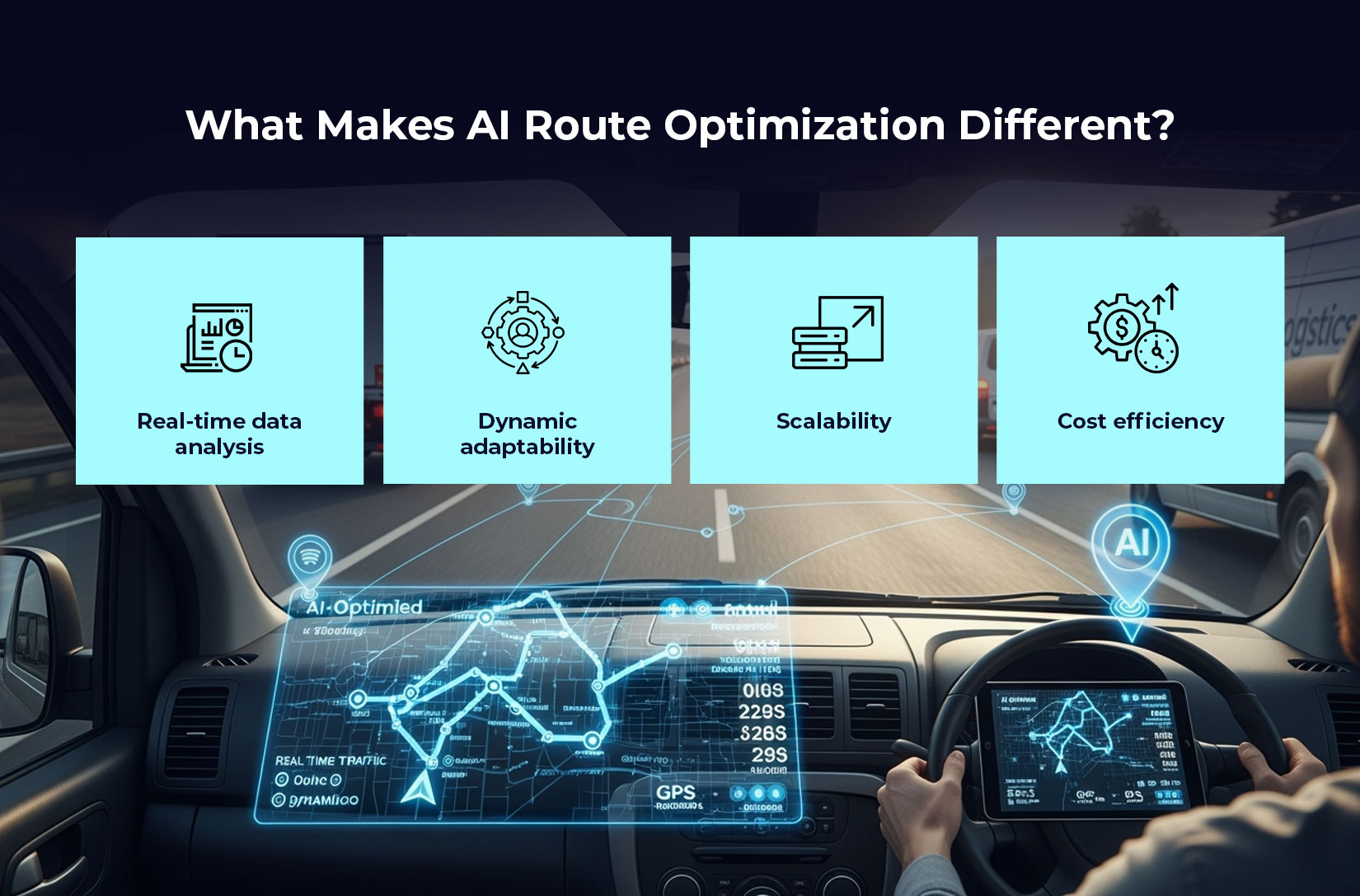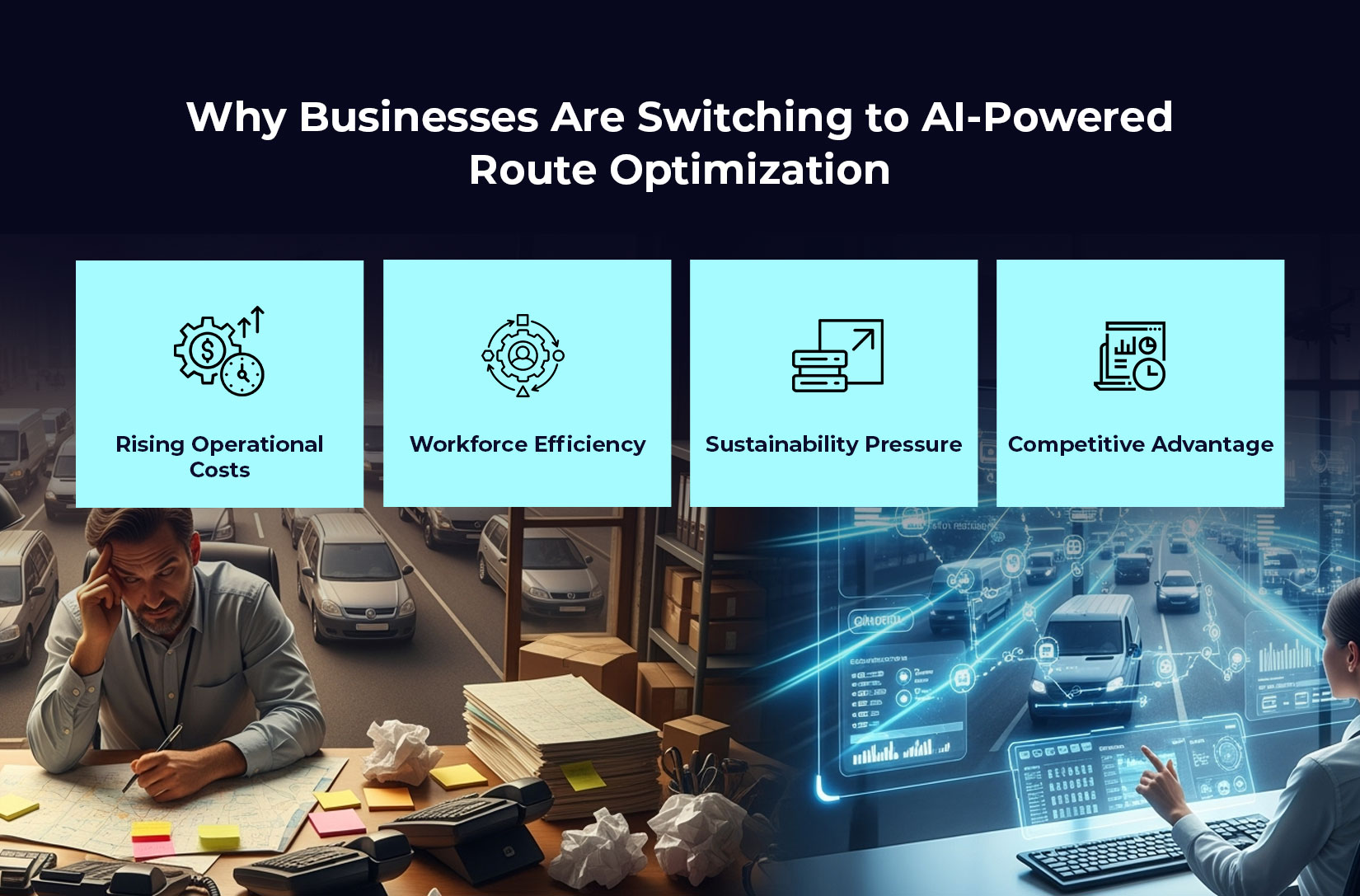
Manual vs AI Route Optimization: Why Smart Software Wins Every Time
In logistics, the narrow margin between profit and loss often hinges on a few key decisions. In many cases, one of those is route planning (or stopping – more on that later). During the past, businesses planned logistically using manual methods: spreadsheets, paper maps, and a “well, I think this is the proper route” methodology based on the routes bullish drivers used in the past. That was fine for when we didn’t have the complexity of today’s logistics networks. The expectations of customers for faster, more accurate, and cost-effective deliveries simply do not allow a business to be inefficient. This is where AI route optimization can come in and completely change the game.
The Problem with Manual Route Planning

If you are a small operator, manual route planning isn’t so bad. A dispatcher can look at delivery addresses, the drivers available, and drivers vehicle capacity, and send out the routes. However, a dispatcher must recognize those limitations:
1. Time-Sensitive:
On average, dispatchers spend 2–3 hours EVERY DAY planning routes manually. This hinders the time to do other, more valuable tasks.
2. Error-Prone:
Human decisions can never account for real-time traffic, weather changes, and calls/disruptions that may (or likely) happen. Time, fuel, product & ultimately inefficient deliveries are all inefficient.
3. Rigid:
Once a route has been manually set up, the ease of making effective and efficient changes is gone. If an unexpected disruption occurred mid-day, it is often chaotic and frustrating for the driver. More than that of the customer.
In an environment of increasing diesel costs, driver shortages, and increasing volumes of deliveries, manual methods are no longer sustainable. When the delivery footprint grows it simply does not scale; leading to delayed shipments and dissatisfied customers.
What Makes AI Route Optimization Different?

AI route optimization software does more than plot your routes; it analyzes, optimizes, and updates them. While traditional human planners develop static manual plans, AI optimizes routes using real-time data, advanced algorithms, and machine learning constructs to give you results no human could ever achieve. Here’s what it offers:
1. Real-Time Data Analysis:
AI and machine learning constructs incorporate GPS data, historic delivery data, and live traffic data. This helps to prescribe the most efficient routes.
2. Dynamic Adaptability:
Where a road might close or traffic may become congested, AI route optimizers automatically calculate options immediately.
3. Scalability:
Dispatch 10, or 10,000 vehicles, the system can solve operational challenges from the most elaborate logistics networks.
4. Cost Efficiency:
Research indicates companies that use AI powered route optimization software cut fuel costs, on average, by 20% and increase delivery time by 25%.
Manual vs AI: A Side-by-Side Comparison
To illustrate the contrast between traditional methods and today’s intelligence, nothing beats a side-by-side comparison. Sure, manual route planning may seem to work for some or even all customers, but once you compare it to a specific AI route optimization software, it’s a game, set, and match.

The difference is clear: AI powered route optimization software isn’t just faster, it’s smarter.
Why Businesses Are Switching to AI-Powered Route Optimization

Customer expectations have changed significantly. Next-day delivery and same-day delivery are now the standard, not “nice-to-have” benefits! Without A.I powered route optimization, companies get behind the 8-ball on next-day or same-day deliveries. The following are the top reasons why businesses are making the switch:
1. Rising Fuel Costs:
Fuel constitutes as much as 30–40% of logistics expenses. With variable pricing, money is lost every wasted mile. AI route optimization gives vehicles the most fuel-efficient route. 2. Workforce Efficiency
2. Workforce Efficiency:
Driver shortages continue globally. Rather than wearing out your crew with unrealistic routes, AI-powered route optimization software uses efficiencies to fairly distribute workloads, which tenants driver happiness.
3. Sustainability Pressure:
Customers and regulators are pushing for green logistics across the board. Better routing translates into better fuel consumption and less carbon emissions. McKinsey found that by optimizing logistics, emissions can be reduced by 15%, at least for urban deliveries.
4. Competitive Advantage:
Companies using AI route optimization software consistently report higher delivery reliability and that, in turn, drives customer loyalty. That type of advantage is priceless in a crowded market.
The Hidden Benefits of AI Route Optimization
AI-driven systems beyond fuels savings and speed, create value in subtle but important ways.
– Predictive Analytics: Demand spikes are anticipated and the planning is done accordingly.
– Integration with Other Systems: Sync with warehouse management, order tracking, and customer notifications for end-to-end visibility.
– Data-Driven Decision Making: With the data of every route completed gets added to the system. This makes the system more intelligent and smarter over time.
Essentially, AI powered route optimization transforms logistics from reactive firefighting into proactive, strategic planning.
A Look Ahead: The Future of Routing in Logistics
We are nearing a time when route optimization will not merely mean avoiding stagnant traffic. With the advancements of IoT, 5G, and predictive AI occurring, the logistics networks will almost be autonomous. We can image asking for delivery and the trucks communicating directly with city infrastructure to determine heaviness in congestion before it even occurred.
When companies invest in AI-powered route optimization software now, they are getting ahead of the curve. Companies that keep relying on manual methods are going to find themselves at a significant disadvantage. As in a marketplace that does not grant forgiveness for time delays, the pace will be dictated by consumers.
Conclusion
In a head-to-head comparison between manual planning and AI-based route optimization the jury is in. Manual planning is slow, inefficient, limited and quickly becoming obsolete. AI is fast, scalable, accurate and provides precisely what logistics requires in today’s world.
Adopting AI route optimization software is about much more than transcendental technology. It’s part of a survival strategy in a fiercely competitive environment. Businesses that implement AI route optimization software will experience instant and impactful improvements in efficiency, cost savings, and ultimately customer satisfaction! Businesses that do not will continue to traverse the maps of their ancestors while their competitors speed past. So, click on the red button below and book a demo with LogiNext Solutions today!
28







@LogiNext